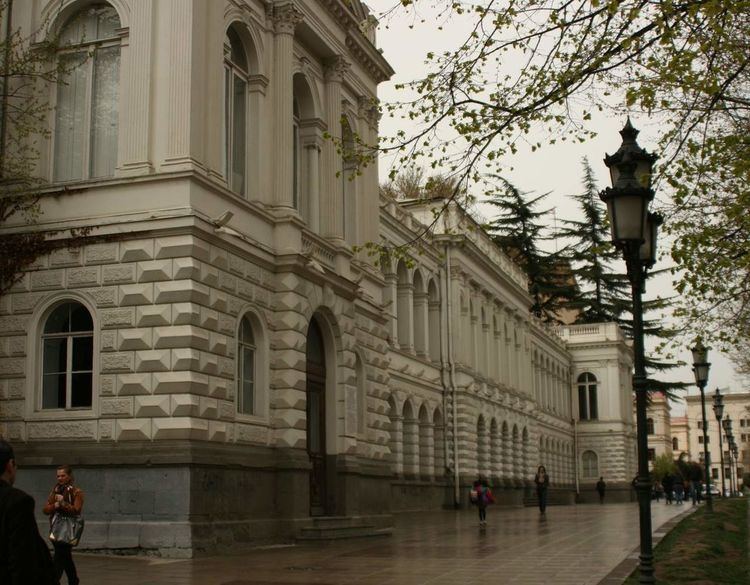Function Palace | ||
 | ||
Similar Tusheti National Park, Narikala, Holy Trinity Cathedral of Tbilisi, Kartlis Deda, Tbilisi Open Air Museum | ||
Georgian National Youth Palace (Georgian: საქართველოს მოსწავლე ახალგაზრდობის ეროვნული სასახლე), originally the Viceregent Palace, is a historical building located on Rustaveli Avenue in Tbilisi, Georgia. It has previously served as the residence of the Imperial Viceroy of the Caucasus.
History
The origin of the building traces its roots to the annexation of Georgia in 1801 by the Russian Empire. The palace was constructed in place of an earlier structure built for the Imperial High-Commissioner Pavel Tsitsianov, himself of Georgian origin, who was assigned to govern the newly-annexed lands. The current edifice was built in the mid-19th century and has since been expanded, rebuilt and remodeled several times to accommodate the needs of later Viceroys, who were of increasingly high rank and stature, such as the Emperor's own son.
In 1918, in the midst of the dissolution of the Russian Empire, the building housed the local government, the Transcaucasian Seim. On 26 May, of 1918, while the government was meeting, the Georgian representatives left the palace and, in the White Hall adjacent to the building, declared the creation of the First Georgian Republic.
In 1921, the Red Army invaded Georgia. The government of Soviet Georgia occupied the building until 1937, when it was decided to gift the building to the areas's children.
On May 2, 1941 the Palace officially opened its doors for children. Today, there are 13 cabinets, 6 studios and 1 workshop in the Palace. In total about 550 hobby groups operate in which about 7 000 pupils are enrolled.
